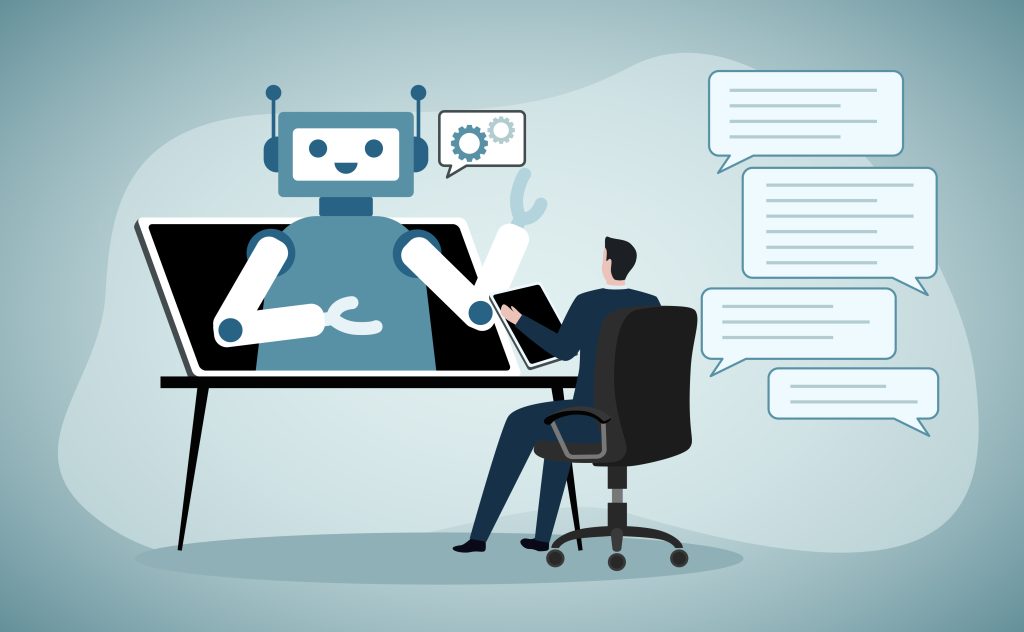
Since ChatGPT was released a year ago, one of the leading topics for educators and edtech developers has been how to integrate AI into teaching and instruction. For all of the concerns about how AI is going to change the world as we know it, it might be helpful to review how the evolution of technology has improved the products teachers are using every day.
When Lexia began in 1984, the vision of using technology for explicit, systematic, and personalized instruction was a novel concept for schools and educators. It was a fringe idea when first introduced. But over the years, educators, parents, and students have seen the advantages of integrating technology into learning, with more effective solutions and stronger student outcomes.
We have always leveraged technology in our literacy products to support teachers and improve student outcomes, always with the teacher at the center of the instructional model—that has been a 40-year journey. We see this as a multiplier of educational impact. AI plus HI (human intelligence) equals improved outcomes. This is something we have always focused on and will continue to focus on into the future. But it’s not just technology for its own sake.
Technology elements, such as performance predictors, assessment technology, and speech-recognition engines, provide significant educational value and represent targeted, responsible use of various technologies, including machine learning, a branch of artificial intelligence. This technology offers teachers information they need to personalize instruction that might not otherwise be available to them. It is intended to change the student experience and student outcomes through the data it provides on each student’s individual learning path.
As much as we talk about the broad effects of technology in instruction, it always comes back to the kind of impact we’re making on individual lives—students’ and teachers’. One of the most rewarding aspects of integrating technology into products is increasing equitable instruction among students. We are:
• Leveraging students’ strengths and effectively scaffolding instruction;
• Encouraging children to use digital tools to collaborate, create, and solve problems;
• Sharing diverse curricula that include all learners’ cultures and engage their interest.
Because the pace of technology developments continues to increase, we believe that schools and districts must prioritize ongoing professional learning for the effective integration of technology into instruction. Professional learning should help teachers give students agency and offer differentiated support to match teachers’ specific skills and knowledge. Since equity without literacy is impossible, it is critical that we develop teachers’ capacity to help all students learn to read.
Instructional Technology in Action for Literacy Learning
While it seems now that everyone is talking about the science of reading, as an organization we have been committed to applying the science of reading through its application in structured literacy since 1984. Research tells us that 95% of all students have the capacity to learn to read when teacher-led instruction and evidence-based curricula align with the science of reading. Always-on diagnostics seamlessly provide multiple asynchronous and synchronous learning opportunities that adapt to individual students to keep them in their zone of proximal development—the place between where a student can achieve alone and where they need assistance.
Our patented technology Assessment Without Testing (AWT) is embedded in Lexia’s curriculum products. Powered by adaptive branching logic to use data to predict students’ future performance, it provides educators with ongoing progress monitoring for each student in order to differentiate instruction in real time. AWT is collecting data with every click, providing information for teachers to assess where students are without stopping or waiting for benchmark assessments. It identifies students’ risk levels, predicts future performance, and prescribes instructional intensity. The adaptive blended learning models of our curriculum products leverage technology to provide a personalized, data-driven approach to learning, giving students control over the time, place, and path of their learning. This framework combines powerful technology features while leveraging the importance of the teacher with robust data and additional offline resources. The adaptive learning model also pinpoints the appropriate entry point for each student, ensuring an optimal learning experience.
Machine learning is an application of AI that we use in our speech-recognition engine, Cambium Smart Speech. This combines computer science and computational linguistics that enables recognition of spoken language and turns it into text. It was coded to accept the phoneme blends/accents of all learners, so it can recognize a wide variety of accented English voices. It helps students interact with activities to practice a concept until it is mastered by utilizing machine learning algorithms behind the scenes as the performance data is being captured. This is a big advantage for emergent bilingual learners and for all students.
The embedded speech-recognition technology provides students with immediate, guided, corrective feedback, helping students build linguistic confidence in academic English. Students work independently at their own pace, following individualized learning paths made available by the combination of student-led online learning and teacher-led instruction.
Past, Present, and Future Use of AI Technology
Our singular focus on literacy and a full spectrum of professional learning, curriculum, and embedded assessment solutions have helped millions of learners read, write, and speak with confidence over the past 40 years. Last year, we served 6.8 million students and 620,000 educators across more than 23,000 schools nationwide. We have done this by leveraging innovative technologies into our products and programs, while keeping the teacher at the center of instruction.
We continue to explore new technologies to determine if we can amplify our services to literacy educators and their students. Every student has the right to learn how to read. Our goal has always been to empower teachers to reap the efficiencies of ever-evolving AI and embedded technology while creating more time for them to focus on what they do best—engaging students in dynamic, systematic, and explicit instruction to help them listen, speak, and read with ease.
Nick Gaehde is the president of Lexia and a lifelong literacy advocate.







